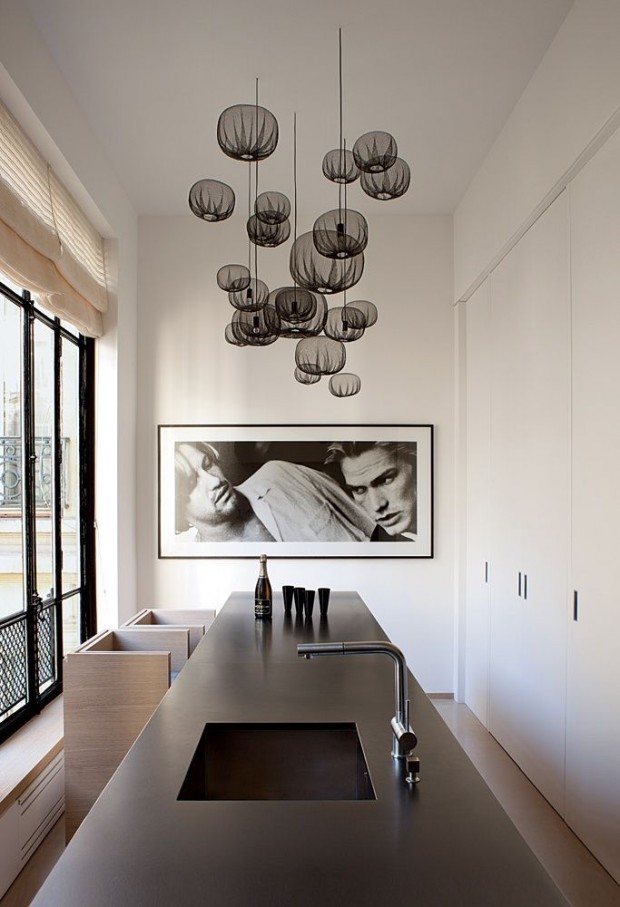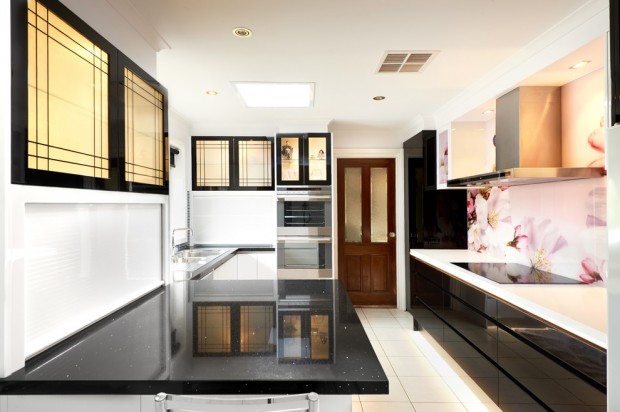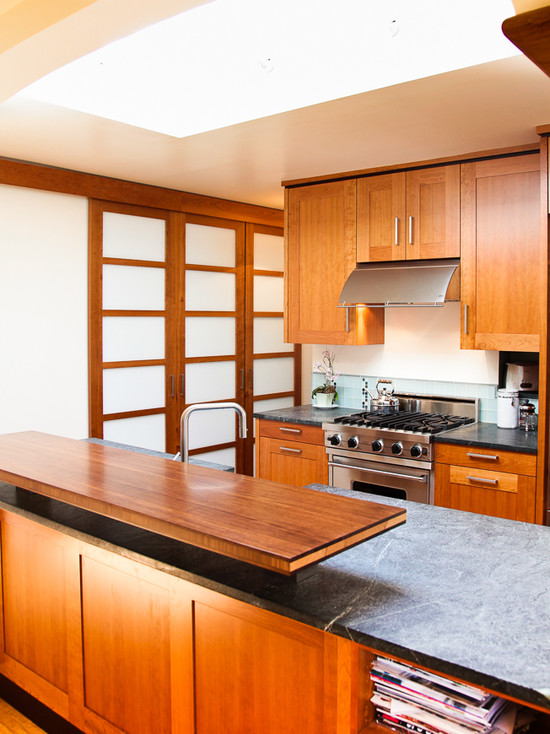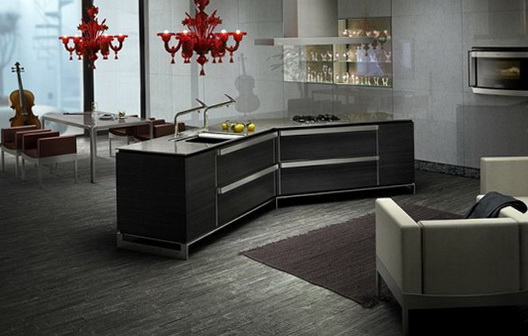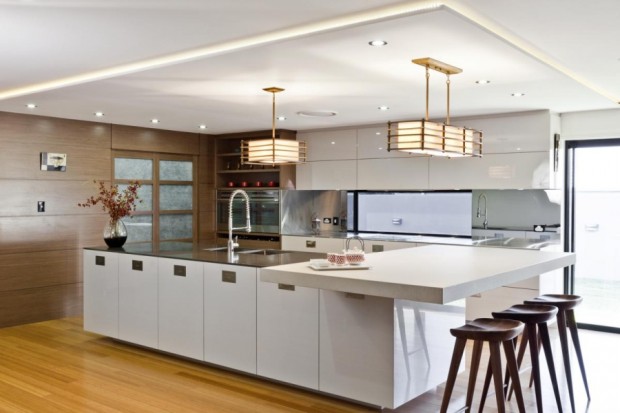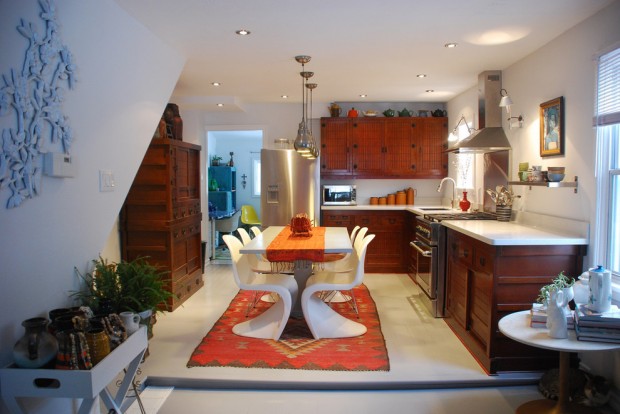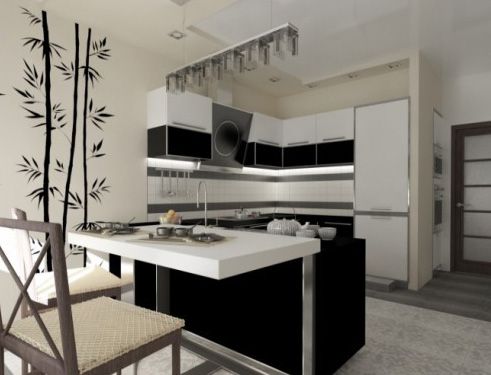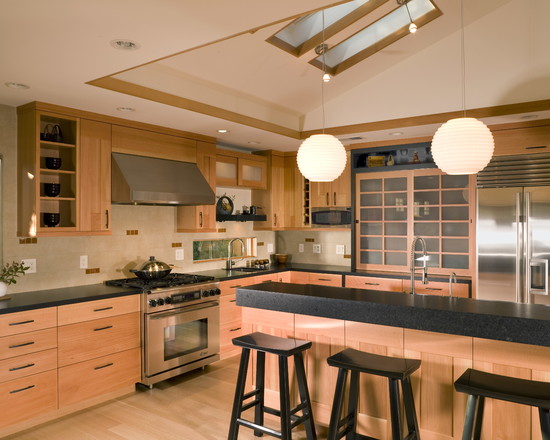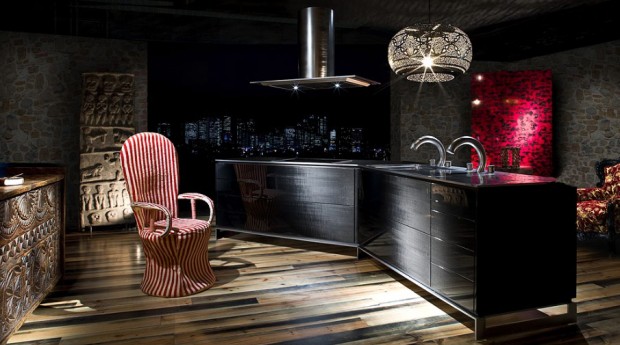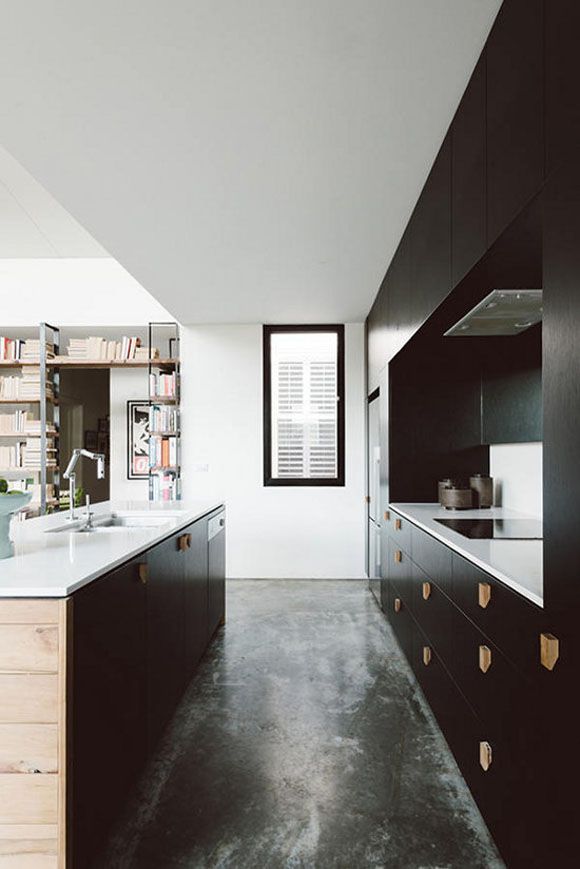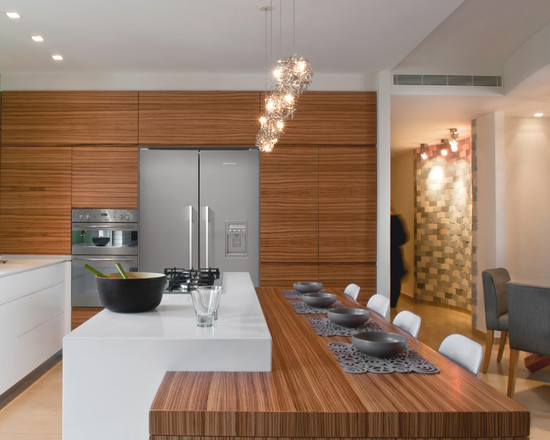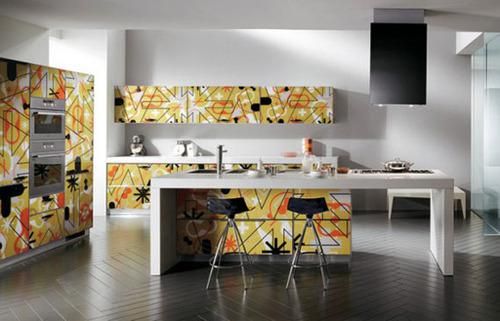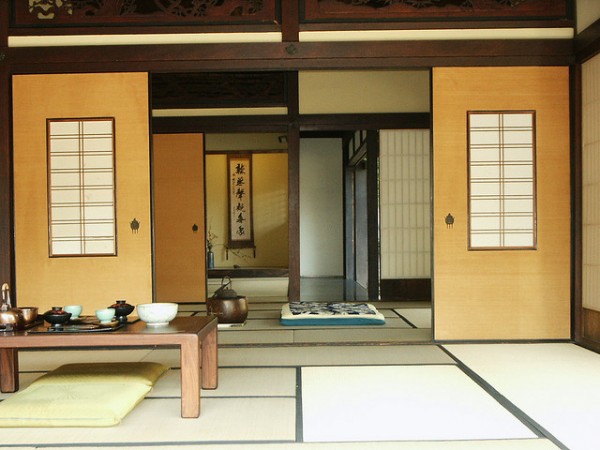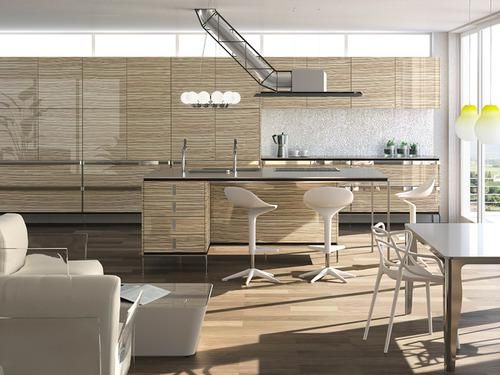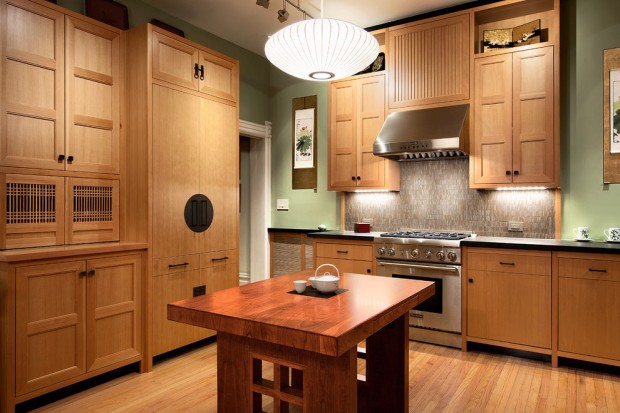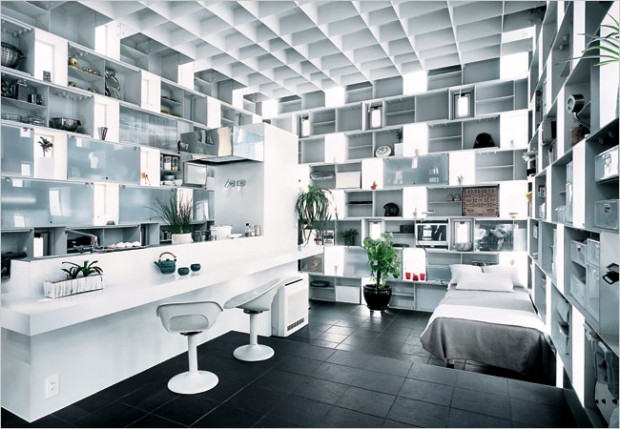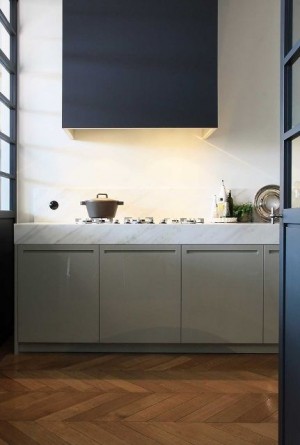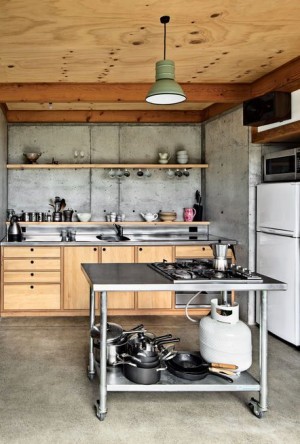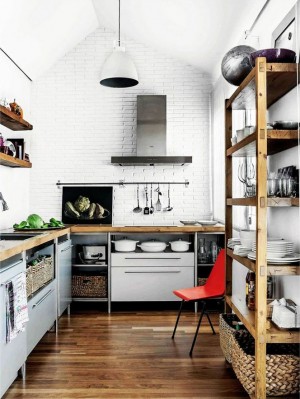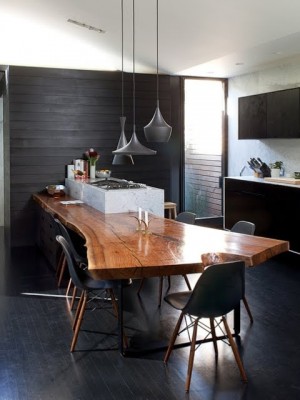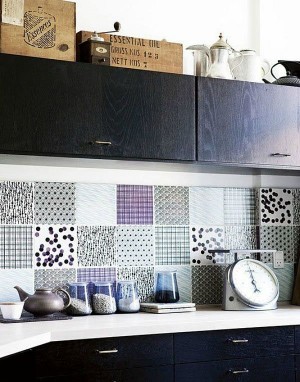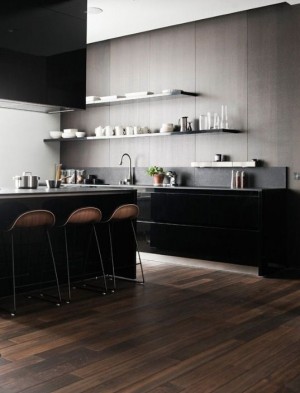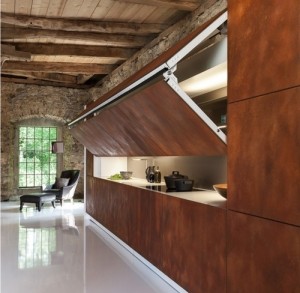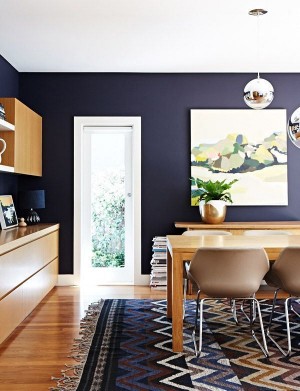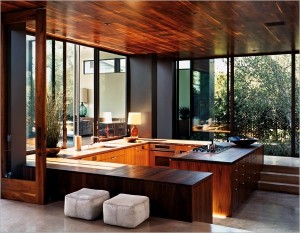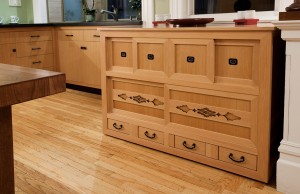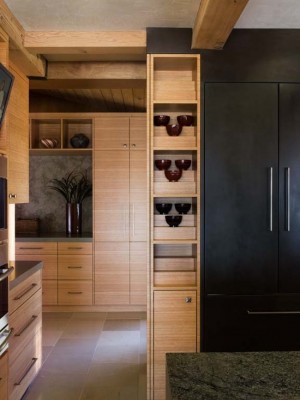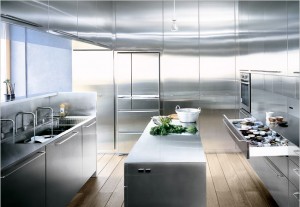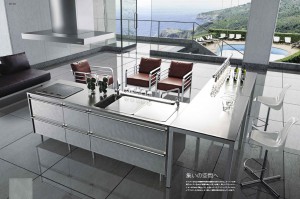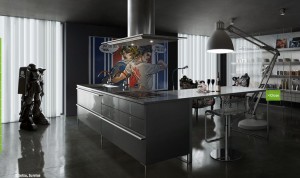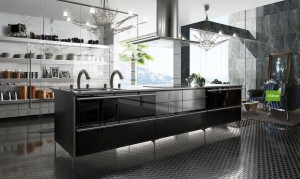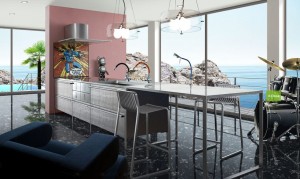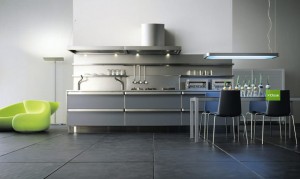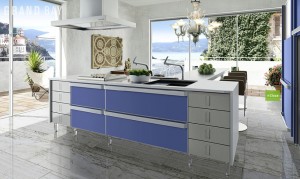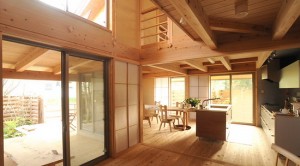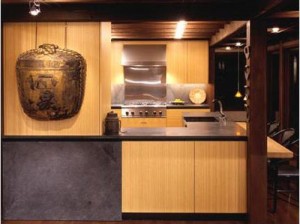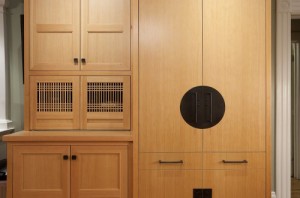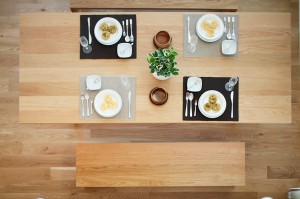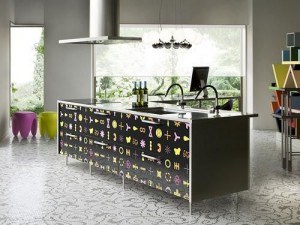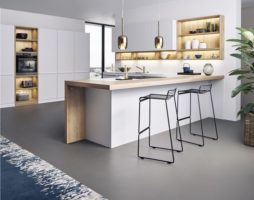Japanese interiors today lead the top styles, and all because such decor is just perfect for decorating small rooms.
It just so happened that the Japanese have long lived in small houses, and their standard apartments have an area of up to 40m2, so local designers had to work hard to make their interiors cozy. How much time it took to develop a number of tricks that made it possible to at least visually expand the space remains a mystery, but the result, as they say, is “on the face”. Look humble japanese style kitchen looks spacious and bright. Its tiny space is almost doubled. Of course, it is not at all easy to recreate a Japanese interior in its purest form, but knowing a number of secrets, you can easily bring a little Japanese mood into your kitchen without much effort.
The Basics of Recreating a Stylish Japanese Kitchen Interior
Japanese interiors are based on the "three pillars":
- Lighting;
- Minimum details;
- natural materials.
The meaning of their creation is maximum functionality and simplicity. All the necessary interior items should fit within a limited footage in such a way that it would be pleasant and comfortable for all household members to be in the kitchen, because this is a room in which they cook food, eat and communicate at the same time.
Let's start by getting rid of unnecessary things and clutter. The Japanese-style kitchen is minimally furnished, but this does not mean that you have to give up modern appliances and most of the necessary items, they just have to be hidden in spacious cabinets. The Japanese are of the opinion: if you want to have a certain thing in the kitchen, then you must have somewhere to store it. The case when the place of storage cannot be found in any way is regarded by the Japanese as a sign that this thing is completely unnecessary in everyday life. They are sure that a lot of different dishes, utensils and accessories can completely capture the space and make an already small kitchen even smaller. The ideal order without unnecessary things, from their point of view, is a real opportunity to get a spacious and open space.
There are several ways to "expand" the space of a Japanese-style kitchen. The easiest way is to "push" the walls using mirrors, but remember that such an interior should have excellent natural lighting during the day and soft diffused light in the evening. Ideally, each functional area is illuminated separately. In a studio apartment, traditional Japanese screens are often used for space zoning. The portable design allows you to change the configuration of the room every time, adjusting the situation to your mood. Great if partitions such a screen will be made of rice paper. In this case, light will penetrate through the structure, but the feeling of privacy will not be disturbed.
The next step will be the selection of furniture. The Japanese style does not accept artificial materials, so furniture and accessories should be made from:
- bamboo;
- Tree;
- Jute;
- rice paper;
- Rattan;
- Straws;
- glass;
- clays;
- natural fabrics.
By tradition, the Japanese-style kitchen is furnished with low tables, which are covered with pillows instead of chairs. Besides the fact that it looks unusual, it also saves space.
If you are not ready for such a traditional setting, then you should come up with a worthy alternative to the Japanese interior. Undoubtedly, you can use the more familiar table and chairs, furnish the kitchen with a set - the main thing is that the chosen furniture is not massive. It is better if you stop at compact models made of unpainted light wood. Kitchen facades should not contain decorative ornaments. Their surfaces can only be flat and smooth. As for the countertops, they should contrast with the facade, so they are painted in red, brown and terracotta tones.
The Japanese are famous for their love for antique wood, but such exhibits are not cheap, but almost everyone can afford to buy furniture made from artificially aged natural wood.
Despite the fact that the Japanese-style kitchen space is small, it is still subject to mandatory zoning.. The functional area in such an interior is most often located along the wall and the sink, located opposite the window, in this case will be a pattern, not an exception. The dining table can be placed not only in the corner of the kitchen, but also in its center. If you want to change the geometry of space, use mobile screens made of the thinnest rice paper.
Nickel-plated parts in Japanese kitchens can have an exceptionally matte finish. Walls and ceilings should impress with the evenness of their surfaces, so drywall should be used to finish them. The floors are lined with laminate or laid out with light-colored parquet. The windows are hidden behind unusual panel curtains, known to our customers as Japanese.
Despite the austerity of the Japanese-style kitchen interior, there is still a place for cute plates, watches, caskets, wooden boxes for spices, straw or bamboo rugs. The main thing is that these additions are few and fit well into the environment.
The kitchen of a modern Japanese without household appliances is nonsense. The inhabitants of this country value comfort very much, so they use it to the fullest. But, entering the room, you will never see a hint of her presence, because all the gadgets used in everyday life are hidden behind the opaque doors of kitchen sets. Nothing remains in sight, therefore, with all its diversity and unusualness, the Japanese style allows you to create incredibly concise and interesting interiors.
back to index ↑Japanese-style kitchen - choose colors
The standard Japanese interior is not full of colors, it is characterized by exclusively natural colors. There will never be an orange refrigerator or a corrosive yellow sink. All shades used are pure and never mixed. Delicate colors perfectly affect the mood. They do not bother, and do not irritate.
The Japanese do not really like dark colors, so olive, caramel, ocher, coffee or milk prevail in the decor.The exception is black, which the Japanese endowed with a special semantic load and used in the interior for contrast. They draw ethnic patterns on screens, sliding doors, blinds and curtains.
In Japanese decor, there is always one dominant color, but this is not an obstacle to the introduction of bright accents. You may well use juicy accessories. Remember that they should not overload the interior, which means that such accent inclusions can be alternated. This will allow you to constantly update the situation in the kitchen, decorated in a simple Japanese style.
It is very important that plants are present in Japanese-style kitchen decor. Plant flowers in laconic pots and place them on the windowsill, special shelves. The minimalist atmosphere will instantly become cozy and full of life. Ikebanas collected from fresh flowers and small bonsai trees are more than appropriate in such decor.
back to index ↑Stylized "make-up" for the kitchen
Natural materials in the interior of a Japanese-style kitchen can be replaced with more modern and practical synthetic ones, and the color palette is significantly expanded.
One hundred percent imitation of the Japanese way of life is inaccessible to the bulk of Europeans. The desire to get closer to the unique traditions remains great. The ideal way out of a piquant situation would be the stylization of the kitchen in the Japanese spirit, that is, the adaptation of the traditional interior to our needs.
Japanese designers have picked up on the idea and are now creating their own interiors tailored to the tastes of foreign consumers. They fearlessly depart from the strict framework of national culture, filling decors with new notes.
The result of such reformations are kitchens of hitherto unseen beauty. The reason is that natural materials in the interior of a Japanese-style kitchen can be replaced by more modern and practical synthetic ones, and the color palette is expanding significantly. Calm and warm tones of earth, wood, sand are replaced by bright and accent blue, chocolate, yellow.
A special role is given to the red color, which is impossible to meet in a truly Japanese decor. For foreign consumers, it causes a stable association with Japanese state symbols. But even with such “connivance”, you should not use more than three colors in the design of Japanese cuisine. In the best case, a couple of natural shades are taken and complemented by an accent one.
The ceiling can not be plastered, but hidden under drywall or stretch materials. However, do not forget about the asceticism inherent in the Japanese-style kitchen - do not arrange frilly designs and do not use glossy PVC film. In oriental decor, they will look, to put it mildly, strange. Stick with the simpler ones. If a plasterboard ceiling is planned, then make it no more than two-level and endow it with clear forms that will help zone the space. For stretch ceilings, it is more rational to use satin or other fabric. A wonderful solution would be photo printing or frescoes on the ceiling depicting cherry blossoms, bamboo groves or coniferous forests. These prints can also appear on the walls.
You can not reinvent the wheel at all, but simply paint the surfaces with matte paint in light warm shades.
Panels or tiles imitating wood will help to stylishly decorate the walls and floor, bamboo wallpaper, artificial stone (just not an imitation of a brick!).Fragmented stone trim can be used for backsplash and entryway, while wallpaper made from the finest bamboo fibers can cover Japanese-style kitchen walls in one piece or combined on their surface with plain paper or more modern vinyl, woven and non-woven finishes. According to their structure, the materials used must be embossed. Try to do without plastic, glass and leather substitutes. If this is not possible, then use them to a minimum.
Wooden beams that can be attached to the ceiling and walls will help to make the interior look like a Japanese one. The best decoration for these decorative elements will, of course, be bamboo, which today can be purchased both in whole trunks and in halves.
back to index ↑A few words about lighting
The kitchen, even just stylized in Japanese style, should be as bright as possible.
The kitchen, even just stylized in the Japanese style, should be as illuminated as possible. In the daytime, ideally, it will be flooded with sunlight, and in the evenings artificial lighting fixtures will come into play. Choosing the latter, you need to stop at models with rectangular or spherical lampshades made of rice paper or wood, then they will emit an unobtrusive soft light that will add warmth and comfort to the atmosphere of the kitchen.
back to index ↑Decorative delights for Japanese cuisine
The decor of Japanese cuisine should be consistent with the overall environment and be concisely expressive. Here you can use engravings, calligraphic scrolls with traditionally wise sayings or images of hieroglyphs, sakura or bamboo branches, flower arrangements, porcelain and figurines of deities. Suitable classic mats and rugs, woven from natural materials.
back to index ↑Summing up
Of the two options considered, the more traditional one will appeal to ascetic people who prefer strict lines, simplicity of furnishings and a spiritual atmosphere to luxury and richness of the interior. The absence of colorful colors and distractions will allow you to focus on the main thing. But most of the people born and raised in the irrepressible rhythms of our time, such a Japanese-style cuisine will frankly get bored, so they should stop at modern stylization, which will show all the beauty of Japanese culture in smoother lines.
Only one thing can be unequivocally stated: no matter which kitchen design option you choose, its interior will certainly be saturated with spiritual depth and none of those who come to your house will be able to reproach you for showing bad taste.
back to index ↑Photo gallery - Japanese-style cuisine:
